In alphabetical order, we continue our look at the 20 biggest movie bombs from 2005 – 2015.
Table of contents
Jupiter Ascending (2015)
Jupiter Ascending was co-financed by Warner Bros (40% of the production costs), Village Roadshow (40%) and Rat-Pac Dune Entertainment (20%) for a huge $179 million.
Jupiter Ascending underwent reshoots in January 2014 and had more reshoots three months later and WB originally scheduled the release for July 18, 2014 but just 6 weeks before it was to open they delayed the pic to February 6, 2015.
Warner Bros claimed that the vfx were incomplete and needed additional work, but the picture was also tracking very poorly.
WB re-scheduled the pic on the same date as the long delayed Seventh Son, which Warner Bros was previously scheduled to distribute before their divorce with Legendary Pictures.
Warner Bros spent about $50+ million on US advertising with over $30 million just in TV advertisements leading up to the film’s release.
Despite the full weight and support of the WB marketing machine, Jupiter Ascending was still tracking poorly and was surrounded by bad buzz.
The expensive pic opened against The SpongeBob Movie: Sponge Out of Water and Seventh Son and struggled with $18,372,372 in 3,181 theaters – placing #3 for the weekend led by The SpongeBob Movie and the Warner Bros holdover American Sniper.
The film’s marketing never seemed to click with audiences and Warner Bros upped their ad spend when the film pulled in its poor opening numbers and they spent an additional $9.8 million in television ads, throwing away good cash at a marketing campaign that was clogging up the airwaves and not connecting with people.
Jupiter Ascending declined 49.6% to $9,254,019 in its second weekend, ending its chances at breaking out and it fell a steep 58.9% in its third frame to $3,805,317. The film ended its domestic run with a less than blockbuster $47,387,723.
Overseas, Jupiter Ascending pulled in troubling numbers as well, opening in 65 markets to $32.5 million and it fell 54% in its second weekend to $58.9 million. Warner Bros distributed in most territories and Australian-based Village Roadshow distributed in their home country to a poor $4,049,140.
Jupiter Ascending pulled in mediocre to poor numbers in most markets, with the exception of a solid $44,620,000 from China (though China pays out just 25% of the gross to foreign films and 45% to domestic films) and its overseas total pulled in $136.5 million and its worldwide cume is $183.8 million – leaving its financiers with about $87 million after theaters take their percentage of the gross, which would not even cover the worldwide P&A spend and leave the budget in the red.
It is estimated that Jupiter Ascending ended as a loss of over $100 million. Warner Bros also had two other high-profile disasters in 2015, Pan and In The Heart Of the Sea.
Mars Needs Moms (2011)
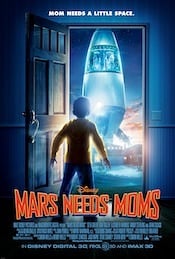
This $150 million budgeted box office train-wreck was financed by Disney, with an estimated $60 million additional in marketing costs, and ended as one of the biggest flops of all time.
Apparently, after executives viewed a rough cut of the picture a year earlier, they decided to close down ImageMovers Digital, which was working on another mo-cap feature The Yellow Submarine, which resulted in a $96 million write down and another $80 million in severances and restructuring.
This was also the first film from director Simon Wells since he was removed from his directing duties on the 2002 flop The Time Machine.
Mars Needs Moms opened in the US a week after the animated Rango and Disney booked it in 3,117 theaters to a predictably awful $6,914,488.
The pic placed #5 for the weekend led by Battle: Los Angeles and Rango. Mars Needs Moms tanked with a total of $21,392,758.
Deciding to cut some inevitable losses after the horrible US opening, Disney sent the film straight to video in a handful of markets, including France.
Mars Needs Moms did predictably awful in every territory and its overseas total would come to a dismal $18.1 million. The home video market was not any kinder to the film, as it pulled in $6.4 million in the US before falling off the charts and was no longer reported. Disney took a $70 million write-down on Mars Needs Moms.
Disney’s following year’s release of what was originally titled John Carter Of Mars, would lose the ‘of Mars’ to distance the expensive project from this turkey, only to become the biggest flop of all time.
Pan (2015)

Pan was budgeted at a massive $150 million by Warner Bros and RatPac Dune and Pan was envisioned by the studio as a potential franchise akin to Harry Potter and Lord of the Rings.
It was dated for July 24 and in April, WB pushed the July release to October 9, giving the filmmakers the time to complete the extensive visual effects – which is the usual PR code for retooling and throwing more money at a film that doesn’t work.
Reshoots commenced with a new cinematographer and additional VFX were added and the film certainly cost more than its reported price tag.
Pan was tracking poorly in the weeks going into release and a whitewashing debate erupted over the casting of Rooney Mara as Tiger Lily. Despite the lack of interest, WB invested in a huge international marketing blitz.
On top of traditional means of marketing, the studio spent a fortune in London, as they turned Leicester Square into Neverland; in Tokyo, the Keyakizaka Complex was turned into Neverland; there were events and exhibitions in Hong Kong and Mexico City; there were also exhibits throughout Asia, Europe, Latin America and the US displaying the film’s costumes; an airship with the Jolly Roger was in multiple airshows in Germany, and there were other no expense spared Pan activities and madness.
Despite all the effort of the WB marketing machine and an unholy amount of money spent, audiences just didn’t care.
Pan received poor reviews and opened way below its low expectations at $15,315,435 (which is the same number the 2003 Peter Pan opened with adjusted for inflation and without 3D price gouging).
It placed #3 for the weekend led by The Martian in its second frame and Pan even opened behind Hotel Transylvania 2 in its third weekend, also competing for family auds. Showing poor legs, Pan tumbled 61.7% in its second weekend to $5,863,128 and continued to post steep weekly declines and closed with just $35,088,320.
Warner Bros rushed this massive flop onto home video just two months after its US opening, days before Christmas.
Pan’s international numbers came in at an underwhelming $25.2 million during its first weekend in 54 territories and stalled with a less than blockbuster cume of $93.3 million.
Warner/RatPac saw their biggest box office misfire since Jupiter Ascending earlier in 2015. It is estimated that Pan‘s losses are at least $100 million.
Rise Of The Guardians (2012)

DreamWorks Animation financed Rise Of The Guardians for $145 million and the pic marked the final release through Paramount, which the animation company was in contract with for the last seven years for distribution.
Rise Of The Guardians opened over the Thanksgiving frame and faced competition with Wreck-It Ralph, which was still going strong in its fourth weekend in release.
Rise Of The Guardians came in far below expectations with $23,773,465 – placing #4 for the weekend led by The Twilight Saga: Breaking Dawn Part 2, Skyfall and the DreamWorks co-production Lincoln and Rise came in slightly ahead of Wreck-It Ralph.
The pic posted a 43.7% second frame decline to $13,388,852 and it leveled off the following weekend, posting a 22.3% drop. Rise Of The Guardians continued to post modest weekly declines and it managed to climb to $103,412,758.
The film took in a decent-sized overseas cume at $203,528,912 bringing the worldwide total to $306.9 million – but after the massive worldwide P&A spend, DreamWorks Animation took an $87 million write-down on the picture and laid off more than 350 employees because of its box office failure
Sahara (2005)
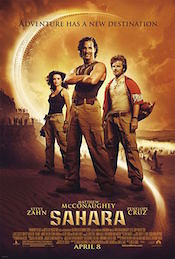
Bristol Bay, which was formerly Crusader Entertainment, which is the sister company to Walden Media, financed this infamous flop, which has since been audited with its staggering losses and numerous instances of bribery in Morocco made public.
Sahara has spent its post-theatrical life in and out of the courts for almost a decade. Before production began, Summit Entertainment pre-sold overseas territories to numerous distributors, and Paramount signed on as a US distributor with their first-look deal with Bristol Bay.
The production was as fiscally irresponsible as filmmaking gets, with the original $80 million budget doubling to $160 million and distribution costs added $81.1 million to the already out of control spend.
Novelist Clive Cussler sued the producers and attempted to block the film’s release, claiming he had contractual control over the script but was not granted it.
Bristol Bay countersued, claiming the author inflated book sales by as much as $50 million to drive up the costs of the rights.
After the film flopped, Bristol Bay sued for $50 million claiming fraud against the publishers and the literary agent to Cussler. This went in and out of the courts until 2013 when the Colorado Supreme Court threw out the case against the publishers.
Sahara opened in the US against the rom-com Fever Pitch and it won the weekend with a soft $18,068,372. Sahara saw a modest 27.7% second-weekend decline and continued to post small weekly drops, but closed its run with a less than blockbuster $68,671,925.
Overseas, the film pulled in a weak $50.5 million, across numerous distributors. Sahara cost Bristol Bay $105 million in losses at the end of 2006 and their write-down of $78.3 million is projected over a 10 year period with continued ancillary sales — and then there is the millions they spent on litigation, which after 8 years went nowhere.
Seventh Son (2014)

Seventh Son was financed by Legendary for $95 million and filming was completed back in 2012 when the pic was set up for distribution through Warner Bros.
The original release date was set for February 15, 2013, but was delayed after the VFX house Rhythm & Hues declared bankruptcy and set back the post-production schedule.
The VFX house bust cost Legendary an additional $4.9 million in post costs. It was rescheduled for October 18, 2013, but the partnership between Legendary and Warner Bros ended and it was bumped to January 17, 2014, and then delayed again until February 6, 2015.
After the WB and Legendary split, Warners scheduled their troubled and delayed Jupiter Ascending on the same date as the troubled and delayed Seventh Son.
CEO of Legendary Thomas Tull expected that Seventh Son was heading for disaster and took an $85 million write down for the pic back in 2013.
Despite taking a preemptive impairment charge on the movie, in April 2014 China Film Co. invested an undisclosed eight-figure amount into the project and took China distribution rights.
After the WB/Legendary divorce, Legendary found a new home at Universal, and Seventh Son finally saw a release through the studio, with all P&A costs covered by Legendary.
Seventh Son opened against The SpongeBob Movie: Sponge Out of Water and Jupiter Ascending and pulled in a terrible $7,217,640 – placing #4 for the weekend led by SpongeBob.
The film declined 42.5% in its second weekend to $4,151,780 but sank 76.7% in its third weekend to $967,700 and promptly lost most of its theater count.
The domestic run closed with just $17,223,265. Legendary would see returned about $9.4 million after theaters take their percentage of the gross, which leaves much of the P&A expenses in the red.
Overseas, the film pulled in a decent $27.5 million from China and $14.9 from Russia but posted soft numbers in most markets and its overseas total came to $96.9 million. Legendary had a rough start to 2015 between The Seventh Son’s $85 million loss and the Michael Mann fiasco Blackhat posting a $90 million loss.
In January 2016, the Chinese company Wanda acquired Legendary for $3.5 billion, and in their financial statements, which were attained by the hollywoodreporter, Legendary lost $555.6 million in 2015.
Seventh Son, Blackhat, Steve Jobs, and Crimson Peak contributed to the loss.
Speed Racer (2008)

Germany’s Federal Film Fund contributed $13 million of the estimated $125 million budget (some sources are as high as $185 million) that was financed by Warner Bros and Village Roadshow and WB launched one of their most expensive ad campaigns leaving WB and Village Roadshow’s investment well over $200 million.
In addition to the Warner Bros marketing campaign, $80 million more was spent from global tie-ins with companies like General Mills, McDonald’s, Hot Wheels, Lego, and more.
With a marketing blitz impossible to ignore, audiences ignored the film when it opened to a soft $18,561,337 – coming in far below the $30+ million the studio expected Speed Racer to open with.
The pic placed #3 for the weekend led by Iron Man in its second weekend and What Happens In Vegas.
After bad buzz, bad reviews, and a 135-minute running time, the family skewing movie was crushed the following weekend when The Chronicles of Narnia: Prince Caspian opened and it sank 56.3% to $8,117,459.
After large weekly declines, Speed Racer closed with a disastrous $43,945,766 at the US box office. Warner Bros released the film overseas in most territories and Village Roadshow released in a handful.
Australian-based Roadshow saw the film tank in their home country with only $2.2 million. Speed Racer flopped in the UK with $3.2 million and the highest gross was $6.1 million from Mexico. The overseas total was a terrible $49.4 million.
It has been estimated that Speed Racer lost Warner Bros and Village Roadshow $114.5 million and is one of the costliest flops on record.
The Lone Ranger (2013)
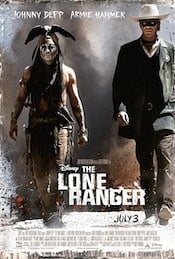
The Lone Ranger was set to go before the cameras in the fall of 2011, but Disney stopped the project from moving forward when the budget escalated to an estimated $260 – $275 million.
Parts of the screenplay were scaled back, some expensive vfx sequences removed and salaries cut and deferred. Disney then greenlit the production with a reduced, but still gargantuan $215 million budget.
Costs began to rise again when production went over schedule from weather-related damage to sets, injured stuntmen, and a fatality from a crew member drowning – which resulted in the Cal OSHA fining Disney $60,000 for safety violations. The estimated budget grew to at least $250 million.
Along with the irresponsible budget, Disney threw more cash away at a global marketing blitz reported to be $150 million.
Additional exposure came from numerous cross-promotional tie-ins, from Subway, Lego, NECA, Theodora & Callum, Will Leather Goods, Kawasaki, and many more. And for The Lone Ranger completist, you can waste your money on a Sterling Silver Lone Ranger Star Sherriff Badge Cufflinks by Robin Rotenier for about $500.
Disney positioned the hopeful new franchise over the July 4th holiday and it was expected to pull in over $60 million during the 5-day frame.
The Lone Ranger bowed against Despicable Me 2 and the modest wide release of Kevin Hart: Let Me Explain. Critics were very unkind to the picture and it came in below expectations with $29,210,849 for the weekend and $48,715,010 over the 5-day frame — miles behind Despicable Me 2 which led the charts.
The Lone Ranger plummeted 60.6% in its second weekend to $11,506,100 which ended its chances at breaking out. It declined 61.9% in its third weekend to $4,380,047 and continued to post large weekly declines. The domestic run ended with $89,302,115.
Overseas numbers were $171.2 million, solid numbers for a western, but deadly numbers for a western with about $400 million in production costs and marketing behind it. In its quarterly financial report, Disney expected to take a $190 million write-down on The Lone Ranger.
The potential franchise was killed off and star in grooming Armie Hammer suffered a major setback. A few months after The Lone Ranger flopped, Disney ended its long-term relationship with producer Jerry Bruckheimer after a string of expensive duds like Prince of Persia, Sorcerer’s Apprentice, and G-Force.
The Wolfman (2010)
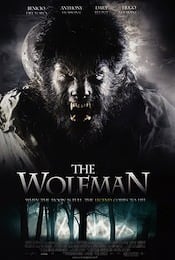
“One of the worst movies we ever made was Wolfman. Wolfmanand Babe 2 are two of the shittiest movies we put out.”
-Ron Meyer, Universal Studios President
The Wolfman never had a chance at the box office after Universal executives interfered to the point where you have to wonder if 16-year-old interns at the studio had more creative input to the film than director Joe Johnston.
Originally filmed in 2008, the film would be ordered into reshoots numerous times where the budget exceeded $150 million. The Wolfman was originally planned as a $100 million production with a 15% UK tax break bringing the budget in at $85 million.
Financiers Universal and Relativity would find themselves on the line for a film that became too expensive to realistically break even.
Universal released in the US over the Valentine’s Day frame with a decent enough start at $31,479,235 but the film received a poor C+ cinemascore from audiences and also had competition from Shutter Island the following weekend which took most of its audience.
The Wolfman sank 68.6% in its second frame to $9,895,105 and continued to post large weekly drops and closed out its run with $61,979,680. Overseas, Universal split territories with their UIP branch (joint distribution between Universal and Paramount), and the film took in $77.8 million, bringing the worldwide total to $139.7 million.
Universal/Relativity would see about $76.8 million after theaters take their percentage of the gross, which would only cover P&A expenses and barely put a dent in the budget. Decent numbers for a gory monster film, but dreadful numbers for a $150 million film with a huge worldwide ad spend.
The Wolfman was yet another massive flop from fired Universal Chairman Marc Shmuger, which the next administration also inherited the out-of-control budgets for flops Green Zone and Scott Pilgrim Vs. The World.
Tomorrowland (2015)

Tomorrowland was financed by Disney for $190 million and the project was shrouded in secrecy and was to be the mouse house’s big end-of-year release in 2014.
It was first dated for December 19th, 2014 and then pushed up a week to December 12 and then delayed until May 22nd, 2015.
Disney spent more than $150 million to market the picture worldwide and launched a vague marketing campaign that tried to keep the premise a secret and it clearly worked against the commercial potential.
It was not clear if Tomorrowland was aimed at children or older audiences and mixed reviews only added to the ambivalence surrounding the picture.
After the marketing blitz, which included a seven-minute sneak preview before IMAX screenings of Avengers: Age Of Ultron, Tomorrowland opened in the US over the Memorial Day frame, against the Poltergeist remake.
It pulled in $33,028,165 for the weekend and $42,679,200 over the 4-day holiday – placing #1 at the box office, but coming in way under expectations. There were no family targeting movies opening for another month until Disney’s Inside Out and Tomorrowland was expected to play well over the upcoming weeks, but its attendance dropped a steep 56.7% in its second frame to $14,303,679 ending its chance at breaking out.
Tomorrowland closed its North American run with a very disappointing $93,436,322.
Overseas, the film pulled in a less than blockbuster $115.7 million, with China posting the highest gross at $19.2 million. The worldwide cume was $209.1 million, which would leave the mouse house with about $109.4 million after theaters take their percentage of the gross, leaving part of the P&A costs in the red and the budget as all red ink — making Tomorrowland one of the biggest box office bombs on record.
Bonus #1: ZYZZYX ROAD (2006)

Made for a cheap $1.2m, Zyzzyx Road staring Tom Sizemore and a not yet bankable Katherine Heigl, is notable for being the lowest-grossing film of all time at the box office with a grand total of $30.
The film was released in one theater in Dallas, which the producers rented for $1,000, for one week with one showing per day at noon, to fulfill a Screen Actors Guild clause that reduces actor’s rates if the film is not direct to video.
The film found a straight-to-video release overseas in some markets, but it took until 2012 to arrive on DVD in the US.
Bonus #2: The Worst Movie Ever (2011)

It cost $1,100 to make and is notable for making the lowest amount of money ever opening weekend at $11 which this no-budget film wears like a badge of honor – for, without that record, nobody would have a clue about its existence.
It is unknown who the single person was who purchased a ticket. If you have proof, please show yourself!

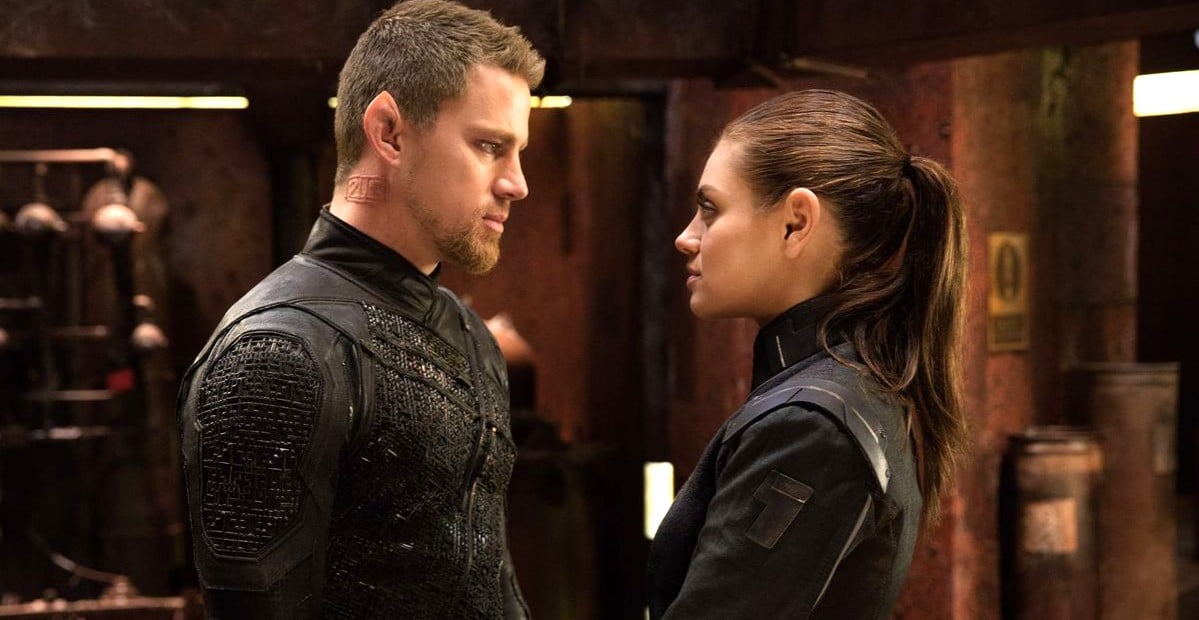
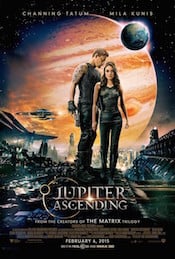


I’m surprised Stealth didn’t make it on.